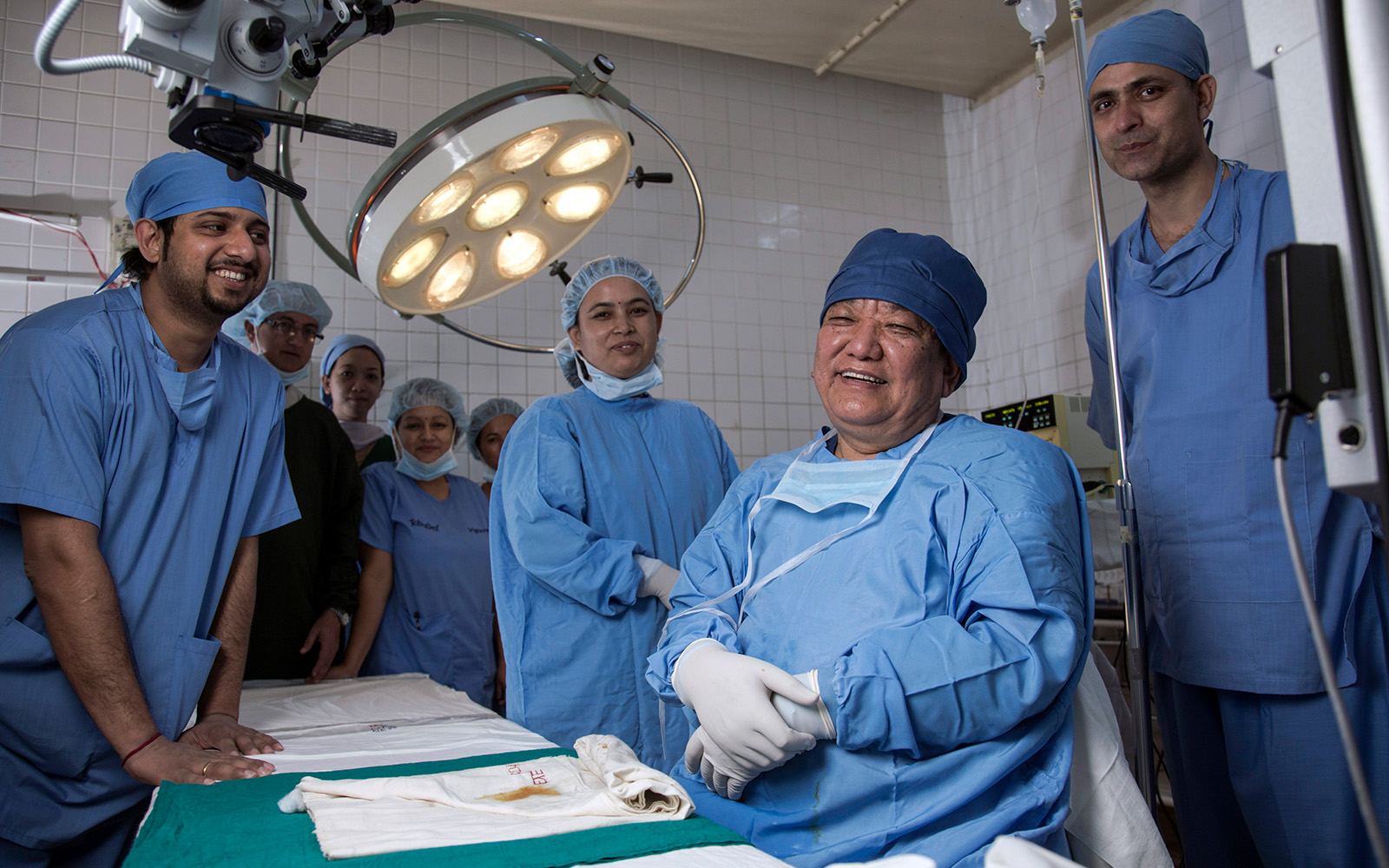An alarming aspect of diabetic retinopathy is its insidious nature. Despite the fact that the condition might be damaging a person’s retina, and therefore their sight, there are often no symptoms.
A classic example is Aatma Ram Upreti.
The 55-year-old farmer who lives on the outskirts of Hetauda, about 130 kilometres south of Kathmandu,
Nepal, has worn glasses for 19 years.
Mr. Upreti saw an optometrist regularly. For the last 10 years, he has also suffered from diabetes. He has been on medication for the last three.
Yet not once had Mr. Upreti's eyes been examined for diabetic retinopathy. The thought never crossed his mind. His sight remained the same, and he experienced no pain or irritation. He was completely oblivious to the fact that diabetes might lead to blindness.
“I did not have the sense that I needed to get my eyes checked for diabetes changes,” he said.
“I did not have the sense that I needed to get my eyes checked for diabetes changes"
“My eye sight is pretty good and I have kept my blood sugar under control, so I never thought I needed a check up."
Thankfully, all that changed recently when Mr. Upreti attended a diabetic retinopathy program at Hetauda Community Eye Hospital, run by the Tilganga Institute of Ophthalmology.
Mr. Upreti attended a free screening camp at the hospital, where his eyes were examined with a portable fundus camera.
The cameras allows large volumes of patients to be screened by mid-level health workers.
Mr. Upreti was diagnosed with diabetic retinopathy, had laser treatment on both eyes and was asked to come back for a follow-up consultation three months later to check his blood sugar levels and his blood pressure.
Diabetic retinopathy is a condition in which the retina is damaged by high blood sugar levels. It can cause reduced vision and in its later stages, blindness.
It is becoming increasingly common in the developing world where lifestyle and diet are changing fast.
Tilganga is the world class eye health facility in Kathmandu, led by the indefatigable
Dr Sanduk Ruit and supported by The Fred Hollows Foundation.

Despite this, the nation's health is poor because health services in general are inadequate.
In one study, one third of people over 40 years of age showed signs of diabetic retinopathy.
Mr. Upreti, meanwhile, is a happy man, now that he is no longer at risk of losing his precious sight.
More Case Studies...
Bangladesh -
How a rickshaw saved a man's sight
China -
David v Goliath: the challenge of diabetes in China
Palestine -
The Foundation supports diabetic retinopathy screening program in Palestine